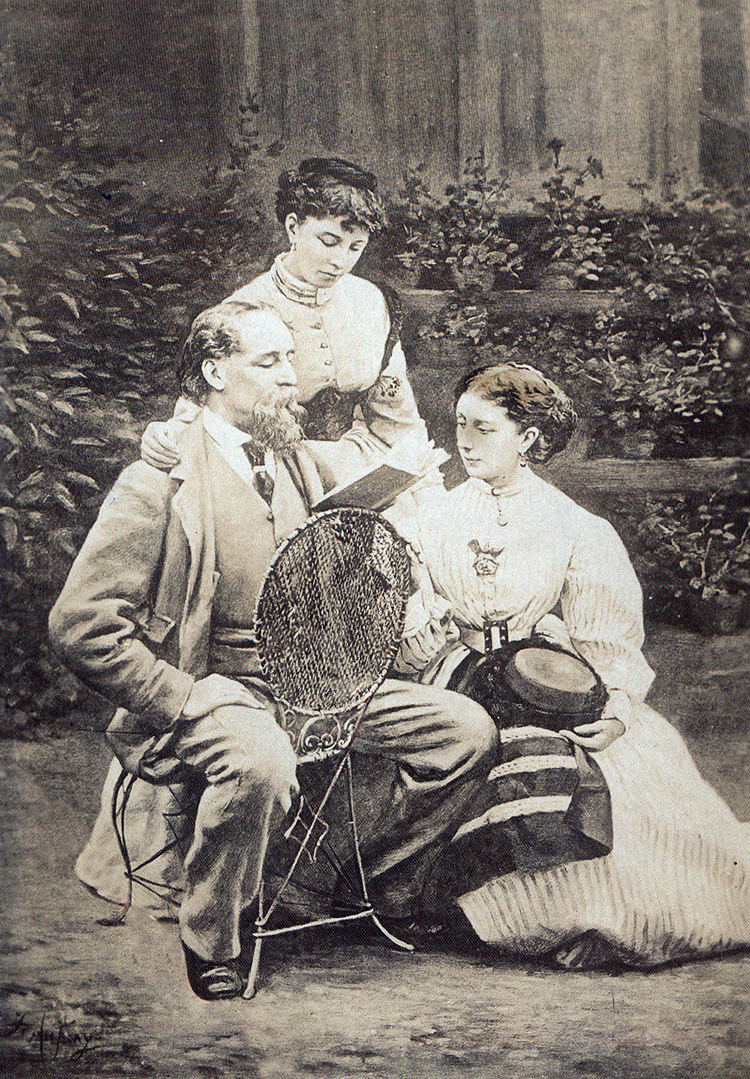“I have an affection for the road yet (though it is not so pleasant a road as it was then)”
Charles Dickens, Great Expectations
In the year 1861, Queen Victoria was on the throne, Lord Palmerston was her Prime Minister in the United Kingdom, and by the end of the year, the Queen’s beloved consort, Prince Albert, would be dead. In this year, Mrs Beeton published her famous ‘Book of Household Management’, Thomas Cook ran the first package holiday from London to Paris, and HMS Warrior, the world’s first ocean-going (all) iron-hulled armoured battleship, was completed and commissioned into the Royal Navy.
Up in Bolton, in the northwest, the first steam-powered merry-go-round recorded began offering rides in January. February of that year saw about 350 convicts held on St Mary’s Island at Chatham Dockyard take over their prison in a riot. Then on the 20th of February, storms damaged the Crystal Palace in London and caused the collapse of the steeple of Chichester Cathedral.
Across ‘the pond’ the American Civil War broke out in April, and the next month the British Government resolved to remain neutral.
This was also a census year for the United Kingdom, where details were recorded of every household member on the night of Sunday 7 April 1861. It was the third UK census where details of the people in each household were recorded, and the data collected would show that the population had more than doubled from what it had been in 1801. This census revealed that most people lived in urban areas of the country in that year.
Where the Dickens?

Another event that happened in October of this year was that Charles Dickens’ novel Great Expectations was published for the first time in book form. It had previously been released as a serial in Dickens’s own weekly periodical All the Year Round, coming out in instalments from 1 December 1860 to August 1861.
A search of the census for 1861 and Charles Dickens, regarded by many book lovers as the greatest Victorian writer, can be found recorded as a 49 year old author, novelist, essayist and editor. At this time, he was living at 3 Hanover Terrace in Marylebone and on census night his daughter, Mary 23 and teenage sons Francis and Edward were under his roof. We are able to easily find this entry on TheGenealogist by entering ‘Charles Dickens’ in the names fields and adding the keyword ‘author’ as a search term.

From the transcript we are able to click through to see an example of one of TheGenealogist’s digitised images of the census page. These have been scanned in 600 dpi greyscale, allowing researchers to see those hidden layers of markings, making them some of the clearest and highest resolution census images available online.
Access Over a Billion Records
Try a four-month Diamond subscription and we’ll apply a lifetime discount making it just £44.95 (standard price £64.95). You’ll gain access to all of our exclusive record collections and unique search tools (Along with Censuses, BMDs, Wills and more), providing you with the best resources online to discover your family history story.
We’ll also give you a free 12-month subscription to Discover Your Ancestors online magazine (worth £24.99), so you can read more great Family History research articles like this!

Another great reason to use TheGenealogist to explore the 1861 census is that we have now linked the records up to our powerful Map Explorer tool, with its layers of georeferenced maps. This resource allows family historians to see a pin on a map that will identify down to the Parish, thoroughfare, or even the actual building in which your ancestor lived. In the case of our famous author, we can see that the house has been located in its neighbourhood of Marylebone with picturesque views across the Boating Lake at Regents Park.

Having great expectations
Charles Dickens had written twelve other novels before he penned Great Expectations and this was to be his penultimate completed novel. The story portrays the education of the main character Pip, an orphan in a coming-of-age-story. Set in early to mid-19th century Kent and London, it is written in the first person as Dickens had previously chosen to do in one of his other great novels, David Copperfield.
Great Expectations is still much loved among readers and critics alike today and features many of Dickens’s iconic scenes that many of us are familiar with from reading the book, or from the many adaptations on TV and film. From the start of the story there is the frightening moment when Pip is waylaid by the escaped convict Abel Magwitch. Then there is the creepy encounter with the wealthy Miss Havisham, the elderly jilted woman living in a ruined mansion and still wearing the wedding dress from the marriage that had never taken place. Also in the cast Dickens included the beautiful Estella, a cold hearted young woman whom Pip falls in love with and who Dickens had assigned the part of the adopted daughter of Miss Havisham. Other characters include Pip’s sister and her kind salt-of-the-earth blacksmith husband, Joe Gargery. Dickens’ novel, Great Expectations explores themes that include wealth and poverty, love and rejection, and the eventual triumph of good over evil and takes us back to the period.
We too can explore the year 1861, when this novel was published, to see where our ancestors lived by finding them in the census for that year. Then we are able to explore their neighbourhood by clicking the link through to the maps on Map Explorer and so see the location of where their household was situated in that year.







